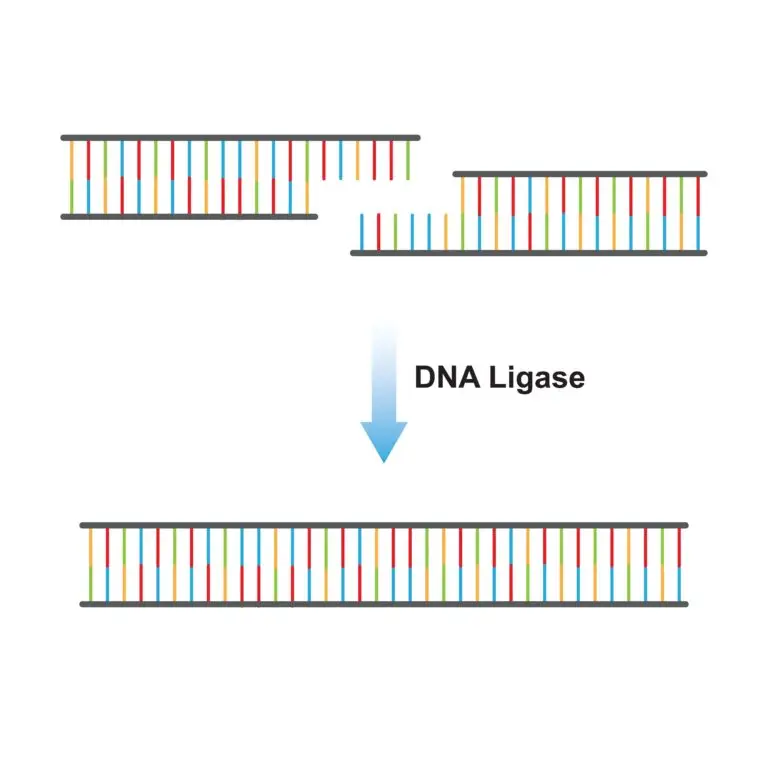Ligase

Table of Contents
What is a Ligase?
Ligase is an enzyme that plays a crucial role in the process of DNA replication, repair, and recombination. Its primary function is to catalyze the formation of phosphodiester bonds between adjacent nucleotides in DNA or RNA strands. Ligase is essential for sealing breaks or nicks in the sugar-phosphate backbone of nucleic acids, allowing them to remain intact and functional.
Functions of Ligase Enzyme
Sealing DNA or RNA Strands
Ligase catalyzes the joining of two nucleic acid strands by forming a phosphodiester bond between the 3′ hydroxyl group of one nucleotide and the 5′ phosphate group of another nucleotide. This sealing process is crucial for maintaining the integrity of DNA and RNA molecules.
DNA Replication
During DNA replication, the enzyme DNA ligase is involved in the Okazaki fragment ligation on the lagging strand. Okazaki fragments are short, newly synthesized DNA fragments that result from the discontinuous synthesis of the lagging strand.
Repair Mechanisms
DNA ligase is involved in various DNA repair mechanisms, including base excision repair (BER) and nucleotide excision repair (NER). In BER, DNA ligase seals the nick left after the removal of a damaged base, while in NER, it seals the gap after the removal of a damaged segment of DNA.
Recombination
Ligase participates in the recombination of DNA during processes such as homologous recombination. It helps join DNA strands that have undergone strand exchange, resulting in the formation of hybrid DNA molecules.
Enzyme Structure
Ligases can have different structural motifs, and their active sites are critical for recognizing and binding to the nucleic acid substrates.
Related Links
Overview of DNA
Homologous
Recombinant DNA
Transcription